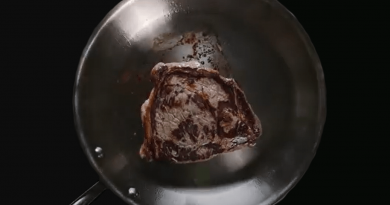Debating Diets: What is the DASH diet?
Thinking about starting a new diet? While the amount of information available can be overwhelming, it’s possible to find a diet that is safe, suitable and effective for your lifestyle.
Dr. Peter Jian with the Medical Weight Management Clinic at Baylor College of Medicine discusses what you need to know about the DASH diet.
Q: What is the DASH diet and how does it work?
A: DASH (Dietary Approaches to Stop Hypertension) is an eating plan that is often recommended to help lower blood pressure. This diet is rich in fruits, vegetables, whole grains, and low-fat dairy products. It is also low in saturated fat, total fat, meats, and sweets.
There are two versions of the DASH diet. The standard version allows up to 2,300 milligrams of sodium per day, and the low-sodium version allows up to 1,500 milligrams of sodium per day.
Studies have shown that the DASH diet may lower blood pressure by causing favorable changes in the body’s blood pressure regulating mechanisms, such as the renin–angiotensin system and plasma nitrite levels.

Q: What is the importance of maintaining blood pressure?
A: High blood pressure increases risks of cardiovascular diseases, such as coronary artery disease, heart failure, atrial fibrillation, peripheral vascular disease, and stroke. The DASH diet can lower cardiovascular disease risk by reducing the blood pressure.
Q: What are the recommended foods? Discouraged foods?
A: The following foods are typically recommended in the DASH diet:
- 4 to 5 servings of vegetables per day, such as kale, tomatoes, and broccoli
- 4 to 5 servings of fruits per day
- 6 to 8 servings of grains and especially whole grains per day, such as brown rice and whole grain pasta
- 2 to 3 servings of low fat or fat-free dairy per day
- 5 servings of nuts, seeds, and legumes per week
Additionally, the DASH diet suggests the following:
- Limiting sweets and added sugars to 5 servings per week
- Limiting sodium to 2,300 milligrams of sodium per day in the standard version
- Limiting sodium to 1,500 milligrams of sodium per day in the low-sodium version
- Limiting lean meat, poultry, and fish to 2 servings per day
- Limiting fats to 2 to 3 servings per day
- Saturated fats (such as butter) and trans-fats (often found in processed foods, commercially baked goods, and fried foods) should be minimized
Q: What are the nutritional benefits of this diet?
A: The DASH diet is high in fiber, potassium, phosphorus, and protein, and low in saturated fat.
Q: Who should avoid this diet?
A: Individuals with advanced chronic kidney disease should be careful with the DASH diet because of the high amounts of potassium and phosphorus.
Q: What kind of physiological changes or side effects should be expected?
A: Most of the time, no side effects are noticeable.
Q: What else should people know before considering this diet?
A: The DASH diet was not developed for weight loss. Whether any type of diet (DASH, Mediterranean, vegetarian, etc.) leads to weight loss depends on many factors. Diet plans need to be individualized for each person.
Dr. Jian is an assistant professor of family and community medicine at Baylor. See more services at Baylor Family Medicine or call (713) 798-7700.
Additional Resources
See more from the Debating Diets series.
-By Nicole Blanton




